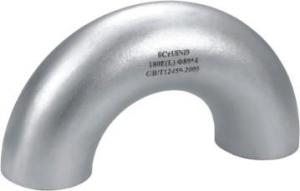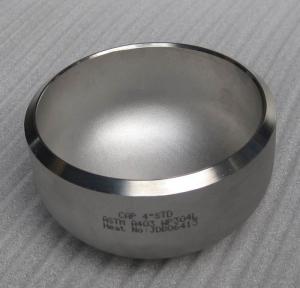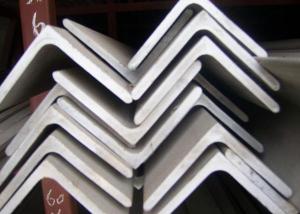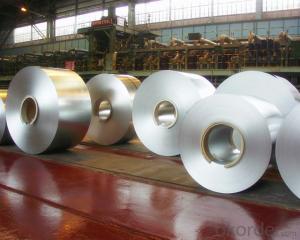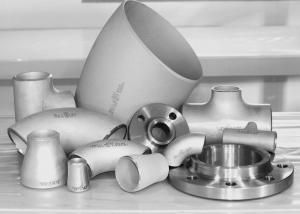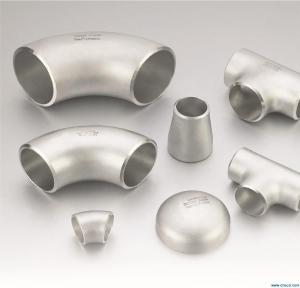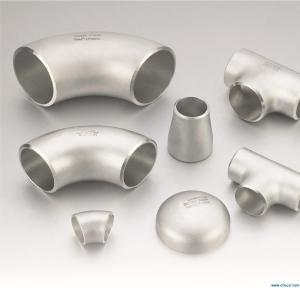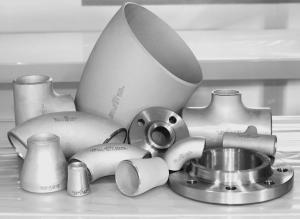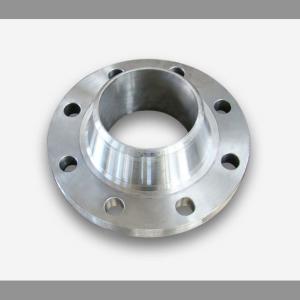Stainless Steel Elbow
- Loading Port:
- China Main Port
- Payment Terms:
- TT or LC
- Min Order Qty:
- 5 Pieces pc
- Supply Capability:
- 1000 Pieces Per Month pc/month
OKorder Service Pledge
OKorder Financial Service
You Might Also Like
Stainless Steel Fittings
Specifications Features:
1) Carbon steel fitting and stainless steel fitting
2) Standard: ASME, ANSI, API, JIS
1. BUTT WELDED FITTING:
2. Production acc. to the standard of GB /ASTM / ASME / DIN / JIS
ASTM B 16.9 /16.11 B 16.28 JIS B 2311/2220 DIN2617/2616/2615/2391
3. Types: Elbows, seamless and welded, LR & SR ,Bend -Equal and reducing Tees,
seamless and welded - Concentric and eccentric Reducers,seamless and welded -Caps
4. Wall thickness: From Sch5 up to Sch160/STD/XS/XXS
5. Material Grades: A403,WP304, WP304L, Wp316, WP316L, A234WPB
6. Dimensions: Seamless: from 1/2' up to 24'
7. size: From 1/2" up to 72"
Outer packing:Seaworthy plywood case
|
Grade |
TP304,TP304L,TP321,TP316L,TP310S etc. |
|
connection |
welding |
|
techniques |
forged |
|
Surface finishing |
180/240/320/400 grit |
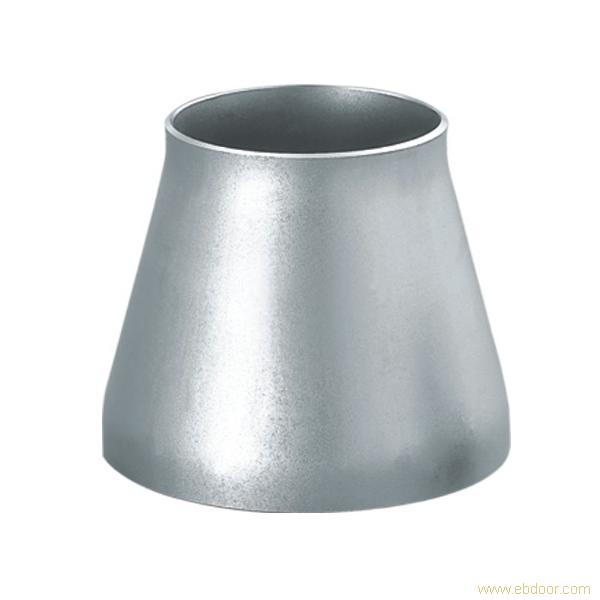
- Q:What is the melting point of stainless steel flat?
- The melting point of stainless steel flat can vary depending on the specific grade or alloy of stainless steel being referred to. Generally, stainless steel is a broad term that encompasses a wide range of alloys, each with its own unique melting point. In general, the melting point of stainless steel ranges from around 1400 to 1450 degrees Celsius (2552 to 2642 degrees Fahrenheit). However, it is important to note that this is a general range and can vary slightly depending on the specific composition of the stainless steel. For example, austenitic stainless steels, which are the most common type of stainless steel, have a melting point range of approximately 1400 to 1450 degrees Celsius (2552 to 2642 degrees Fahrenheit). On the other hand, ferritic and martensitic stainless steels have slightly lower melting points, typically ranging from 1300 to 1400 degrees Celsius (2372 to 2552 degrees Fahrenheit). It is worth mentioning that the melting point of stainless steel is significantly higher than other commonly used metals such as aluminum or copper. This high melting point is one of the reasons stainless steel is often used in applications where strength and resistance to high temperatures are required, such as in the aerospace or automotive industries. In conclusion, the melting point of stainless steel flat can vary depending on the specific grade or alloy, but generally ranges from around 1400 to 1450 degrees Celsius (2552 to 2642 degrees Fahrenheit).
- Q:Can stainless steel flats be used in food processing industries?
- Yes, stainless steel flats can be used in food processing industries. Stainless steel is a popular choice in food processing industries due to its numerous beneficial properties. Firstly, stainless steel is resistant to corrosion, which is crucial in environments where the flats may come into contact with various food products, cleaning chemicals, and water. This resistance to corrosion ensures that the flats remain hygienic and safe for food processing applications. Secondly, stainless steel is easy to clean and maintain, making it ideal for industries that prioritize cleanliness and sanitation. The smooth surface of stainless steel flats prevents the accumulation of food particles, bacteria, and other contaminants, reducing the risk of contamination in the food processing process. Additionally, stainless steel is non-reactive, meaning it does not leach any harmful substances into the food being processed. This is especially important for acidic or alkaline food ingredients that can react with other metals and potentially contaminate the food. Stainless steel flats provide a reliable and safe material for food processing equipment, ensuring the integrity and quality of the final food products. Furthermore, stainless steel is highly durable and can withstand high temperatures, making it suitable for various food processing operations such as cooking, baking, and sterilization. Its strength and resilience allow the flats to withstand rigorous use and cleaning procedures without compromising their structural integrity. In conclusion, stainless steel flats are an excellent choice for the food processing industry due to their corrosion resistance, easy maintenance, non-reactivity, durability, and ability to withstand high temperatures. These properties make stainless steel an ideal material for ensuring food safety and maintaining hygienic conditions in food processing operations.
- Q:Are stainless steel flats resistant to chemicals and acids?
- Yes, stainless steel flats are highly resistant to chemicals and acids. The material's corrosion-resistant properties make it suitable for use in various industries where exposure to corrosive substances is common.
- Q:Can stainless steel flats be used in the textile industry?
- Certainly, the textile industry can utilize stainless steel flats. These flats are extensively employed in textile machinery and equipment owing to their exceptional resistance to corrosion, durability, and strength. They find widespread usage in the manufacturing of spinning frames, yarn winding machines, looms, and various other components of textile machinery. Moreover, stainless steel flats are also involved in textile processing, such as in dyeing and finishing machines. Their ability to withstand high temperatures and chemicals makes them highly suitable for these purposes. Furthermore, stainless steel flats offer a polished surface finish, which plays a vital role in preventing snagging or causing damage to delicate fabrics during the manufacturing process.
- Q:What is the weight of stainless steel flats?
- The weight of stainless steel flats can vary depending on the size and thickness of the flat. Generally, stainless steel flats have a density of around 7.9 grams per cubic centimeter. To calculate the weight of a stainless steel flat, you would need to multiply the density by the volume of the flat. The volume can be calculated by multiplying the width, height, and thickness of the flat. The resulting weight will be in grams or kilograms, depending on the units used for the dimensions.
- Q:Which is better, stainless steel angle steel or ordinary angle iron?
- Stainless steel angle iron bears good force. Because the stainless steel angle is constructed with carbon structural steel, is a simple section of steel, mainly used for metal components and plant frame.
- Q:Can stainless steel flats be used in the HVAC industry?
- Yes, stainless steel flats can be used in the HVAC industry. Stainless steel is often preferred in HVAC systems due to its excellent corrosion resistance, durability, and high heat resistance. It is commonly used for various components such as ductwork, vents, pipes, and heat exchangers in HVAC systems to ensure long-lasting and efficient performance.
- Q:How do stainless steel flats resist scaling and oxidation?
- Stainless steel flats are able to resist scaling and oxidation due to their unique composition and properties. Firstly, stainless steel contains a high percentage of chromium, typically around 10-30%. This chromium forms a thin, protective layer of chromium oxide on the surface of the steel when exposed to oxygen. This layer acts as a barrier, preventing further oxidation and corrosion from occurring. Additionally, stainless steel flats often contain other alloying elements such as nickel, molybdenum, and nitrogen. These elements further enhance the resistance to scaling and oxidation. Nickel helps to stabilize the austenitic structure of stainless steel, making it more resistant to high temperatures and oxidation. Molybdenum increases the corrosion resistance in chloride environments, while nitrogen improves the strength and corrosion resistance of stainless steel. Furthermore, the microstructure of stainless steel flats also plays a role in their resistance to scaling and oxidation. Stainless steel can be classified into different types based on their microstructure, such as austenitic, ferritic, martensitic, and duplex stainless steels. Austenitic stainless steels, which contain higher amounts of chromium and nickel, are particularly resistant to scaling and oxidation due to their stable structure. In summary, stainless steel flats resist scaling and oxidation due to the presence of chromium, other alloying elements, and the specific microstructure of the steel. These factors work together to form a protective layer on the surface, preventing further oxidation and corrosion and ensuring the durability and longevity of stainless steel flats in various applications.
- Q:Can stainless steel flats be used in pulp and paper industry?
- Yes, stainless steel flats can be used in the pulp and paper industry. Stainless steel is known for its corrosion resistance, durability, and strength, making it suitable for various applications in this industry such as machinery components, storage tanks, and piping systems. Its resistance to chemicals, high temperatures, and moisture makes it an ideal choice for withstanding the harsh environments often found in pulp and paper mills.
- Q:What are the phosphating properties of stainless steel flats?
- Phosphating is not typically performed on stainless steel flats due to their inherent corrosion resistance. Stainless steel flats already have a natural oxide layer that provides protection against rust and corrosion, making phosphating unnecessary.
1. Manufacturer Overview |
|
|---|---|
| Location | Zhejiang, China |
| Year Established | 2010 |
| Annual Output Value | above US$16 million |
| Main Markets | East Asia, Middle East. |
| Company Certifications | |
2. Manufacturer Certificates |
|
|---|---|
| a) Certification Name | |
| Range | |
| Reference | |
| Validity Period | |
3. Manufacturer Capability |
|
|---|---|
| a)Trade Capacity | |
| Nearest Port | Shanghai |
| Export Percentage | |
| No.of Employees in Trade Department | above 10 people |
| Language Spoken: | English, Chinese |
| b)Factory Information | |
| Factory Size: | about 30000 square meter |
| No. of Production Lines | above 7 |
| Contract Manufacturing | OEM Service Offered |
| Product Price Range | Average |
Send your message to us
Stainless Steel Elbow
- Loading Port:
- China Main Port
- Payment Terms:
- TT or LC
- Min Order Qty:
- 5 Pieces pc
- Supply Capability:
- 1000 Pieces Per Month pc/month
OKorder Service Pledge
OKorder Financial Service
Similar products
New products
Hot products
Related keywords
